The Elemento is Kask’s new top of the range, all-round road helmet.
It uses premium materials and 3D-printed padding for a ‘no compromises’ approach to aerodynamics, cooling and safety. At £335/$400/€375/AUD$570, it's priced accordingly.
In use, the Kask Elemento impresses with excellent comfort, good cooling and attractive looks, alongside its aero credentials.
However, a small build-quality issue, a slightly basic retention system and, ultimately, that exceptionally high price, hold it back from a higher score.
Kask Elemento specification
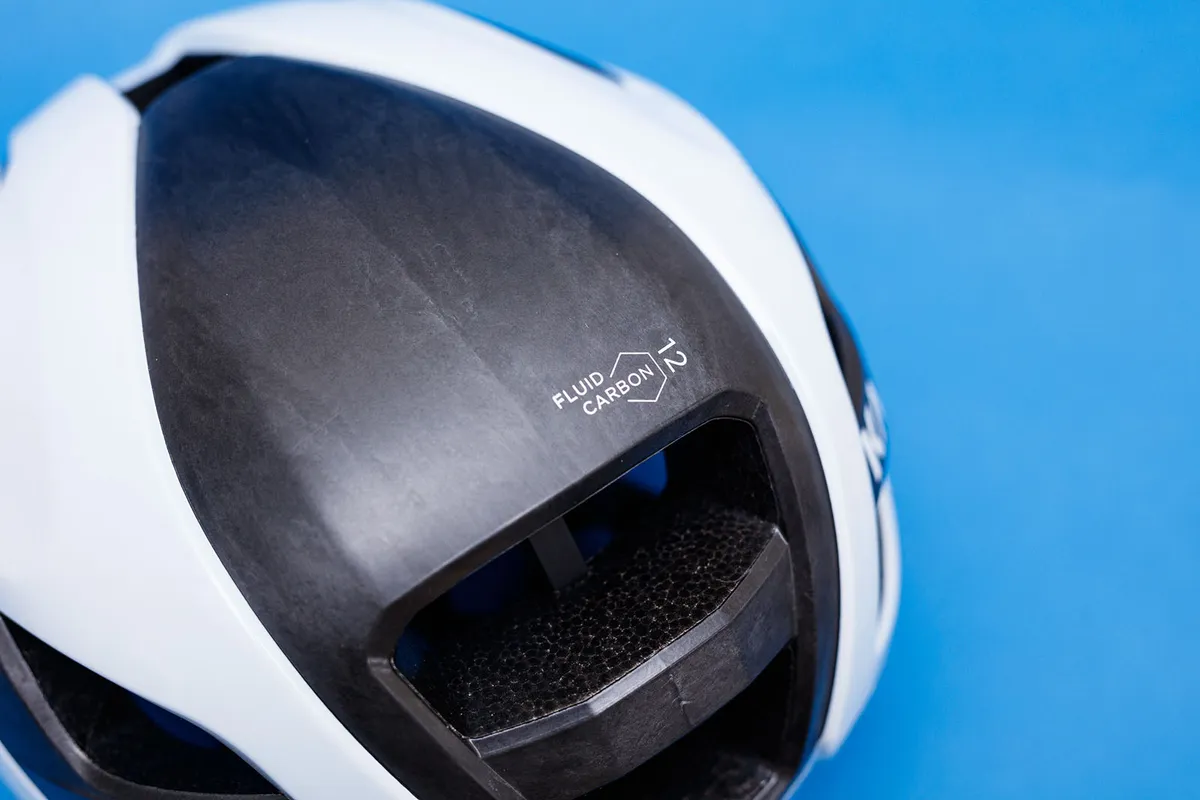
Key to the Elemento’s design is its use of a composite technopolymer (a kind of high-end plastic) it calls Fluid Carbon 12.
Kask says using this material has enabled it to partially close off some of the ventilation holes for improved aerodynamic performance, while enlarging the size of the internal ventilation channels to maintain airflow.
Additionally, the Elemento gets Kask’s new 3D-printed Multipod padding. Kask says this padding helps improve both ventilation and safety, with the Elemento gaining a five-star (out of five) rating from Virginia Tech’s Helmet Lab.
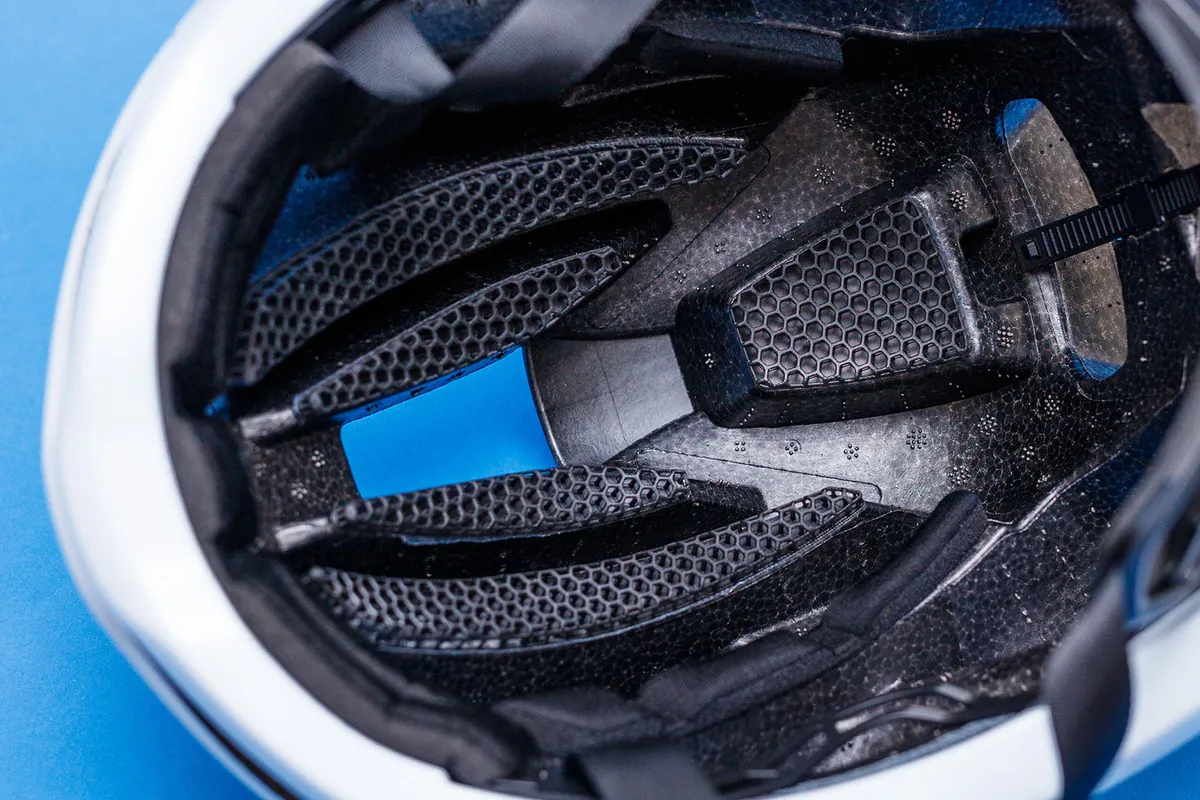
Multipod is essentially Kask’s answer to MIPS, because it's said to help reduce the transfer of rotational energy to your brain in the event of an impact to your head.
Kask also says the Elemento passes its internal WG11 rotational impact test.
In terms of performance improvements, Kask claims the Elemento offers a 1.5 per cent reduction in aerodynamic drag, alongside an “estimated 0.26°C reduction in head temperature”, compared to the Kask Protone Icon (on which the Elemento is based).
Achieving these gains has added £90/$100/€100/AUD$161 to the price, however.
It’s also a substantial step up in price compared to the competition, such as the Specialized S-Works Evade 3 (£275/$300/€330), Giro Eclipse Spherical (£240/$250) and MET Manta MIPS (£220/€260).
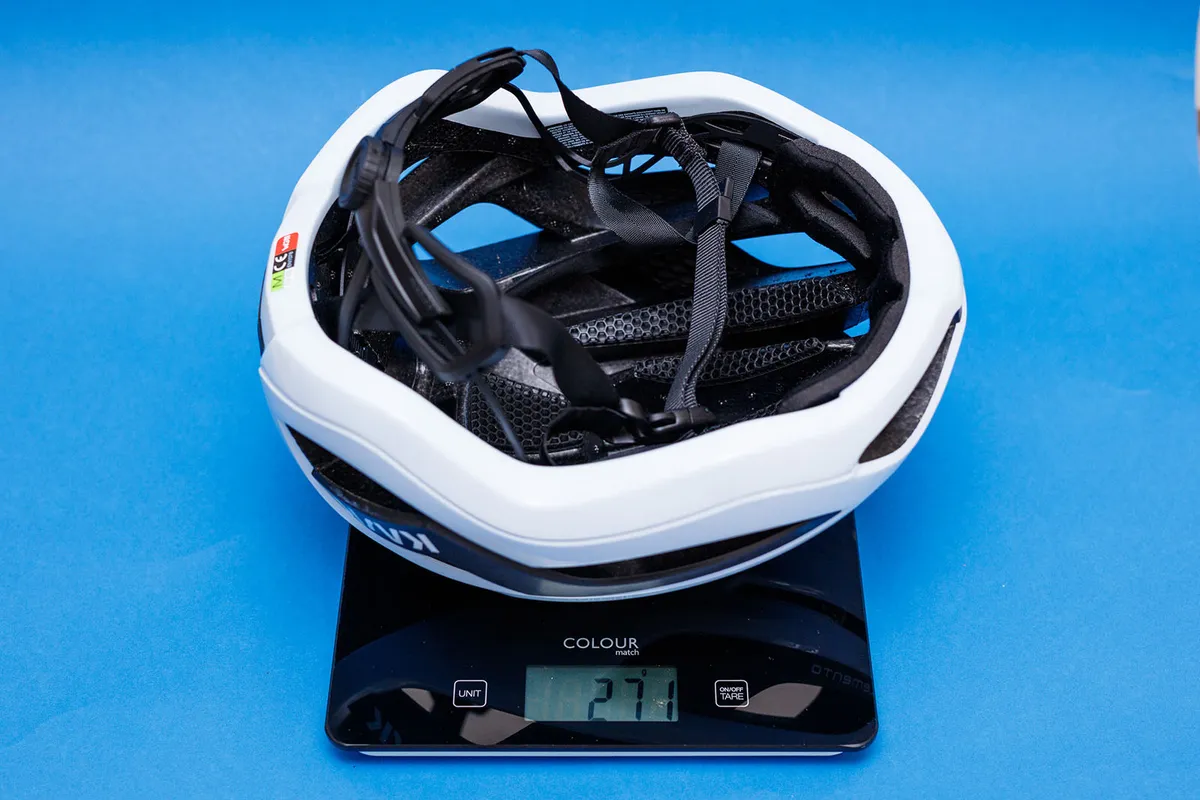
On the scales, our white, size-medium Elemento weighs 271g. That’s 11g over the claimed weight of 260g, and 13g heavier than Kask’s dedicated aero road helmet, the Utopia Y (258g).
It’s also 41g heavier than the Kask Protone Icon, which might feel like a step backwards for weight weenies.
That isn’t much in the grand scheme of things, though, and if it helps improve the protection the helmet offers your head in a crash then that feels a fair trade-off to me.
The Elemento’s weight is also in line with the Specialized S-Works Evade 3 (272g, white, size medium) and Giro Eclipse Spherical (277g, Ano Blue, size medium).
Kask Elemento performance

The first thing you notice when putting on the Kask Elemento is the luxuriously thick padding, which makes it feel very comfortable on the head.
Compared to the Boa dial on the recently launched Trek Ballista (£229.99/$299.99/€299.99), the Octofit+ retention system feels a little basic, especially for a helmet of this price.
It functions mostly without complaint, being easy to adjust and providing a secure fit without any pressure points.
However, as on the Kask Sintesi, the height-adjustment mechanism doesn’t fix in place, meaning the fit needs to be adjusted practically every time you put it on.
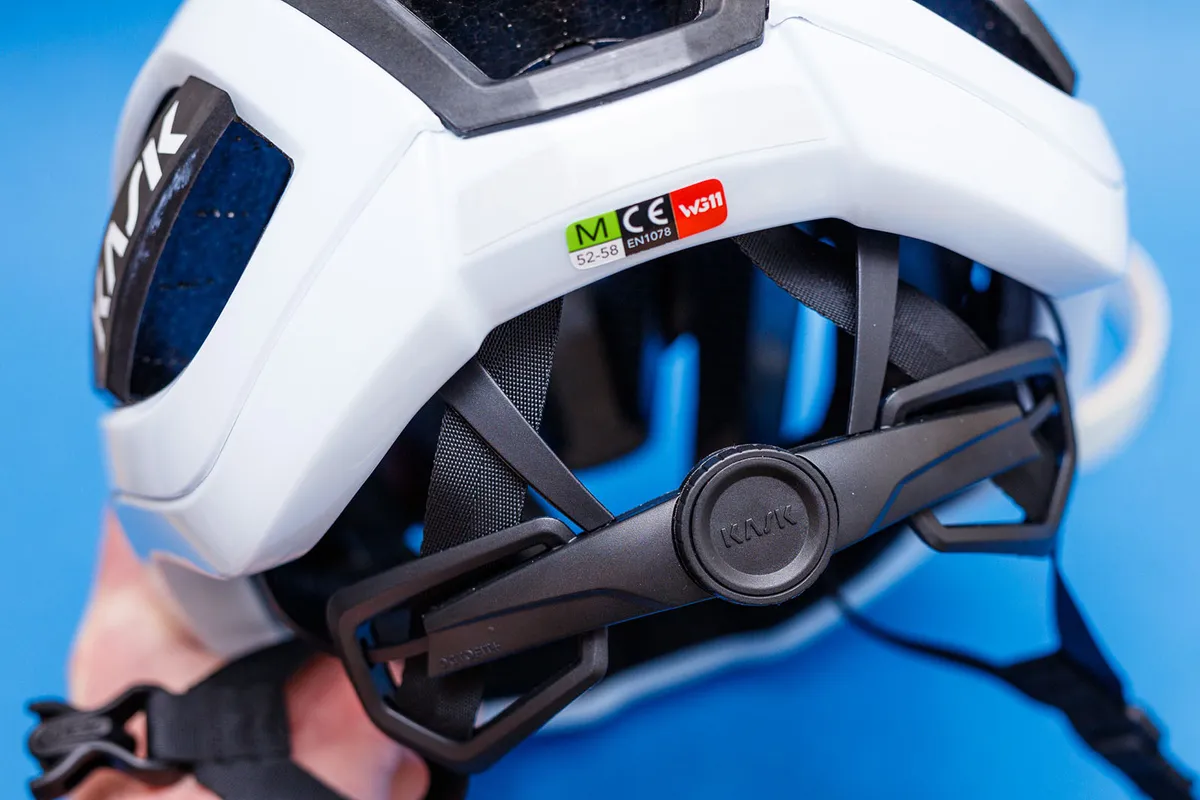
It’s not an onerous task, but it is a bit annoying when most high-end helmets don’t require this degree of pre-ride fiddling.
Unlike the Sintesi, the chin strap isn’t adjustable at the ears (presumably to save a little weight). This might be an issue for some, but it didn’t cause me any trouble.
Assessing the Elemento’s aerodynamic performance is essentially impossible without the help of a wind tunnel. When asked, Kask implied the Utopia is still its most aerodynamically efficient road helmet (by an unspecified amount and at the cost of some ventilation).
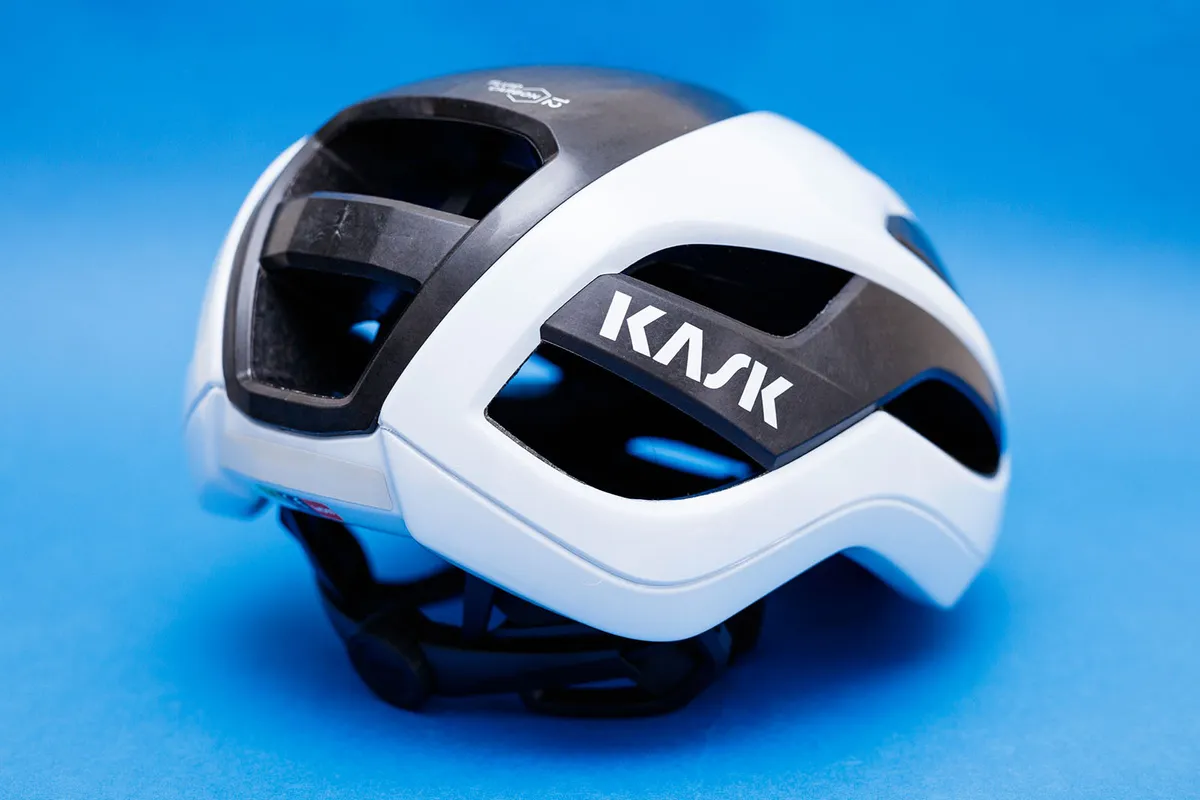
It does feel more ventilated than the Specialized S-Works Evade 3, though, which is already impressively airy for a proper aero road helmet.
I expect the rounder shape will also appeal to those who find the elongated, more obviously ‘aero’ shapes of helmets such as the Evade 3, Trek Ballista and Smith Optics Ignite to be less aesthetically pleasing.
I also can’t assess whether the 3D-printed Multipod padding offers more protection than regular foam padding, but I can say it’s just as comfortable.
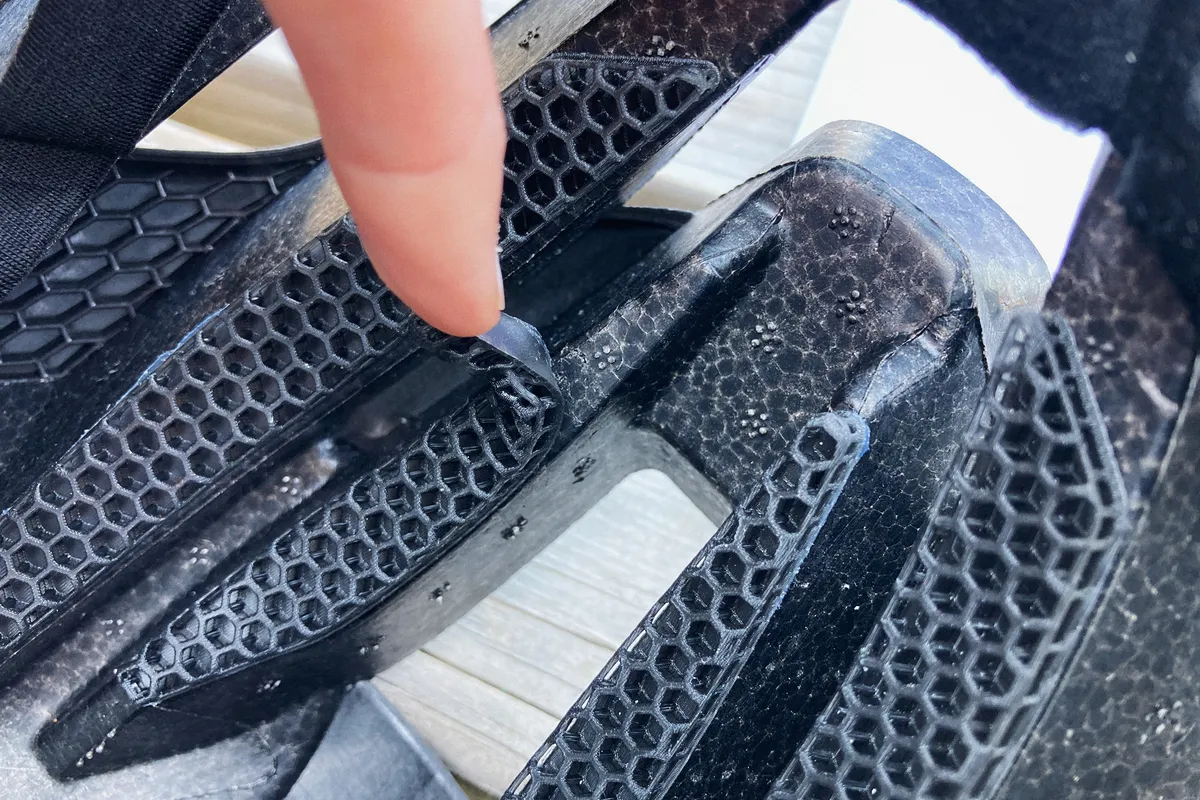
My only issue with it is that these pads are glued in place (the standard pads are held in place with Velcro), and two of the five are already beginning to peel away from the EPS foam, despite it only being a month or so since I first pulled the Elemento out of its box.
I’m sure I can just stick them back down again with some glue, but it’s not great to see this on one of the most expensive bike helmets currently available.
It’s a shame, because the main body of the helmet otherwise feels exceptionally well made. The EPS foam core is impressively finished, with no obvious rough edges or faults, and the quality of the shell is very good too.
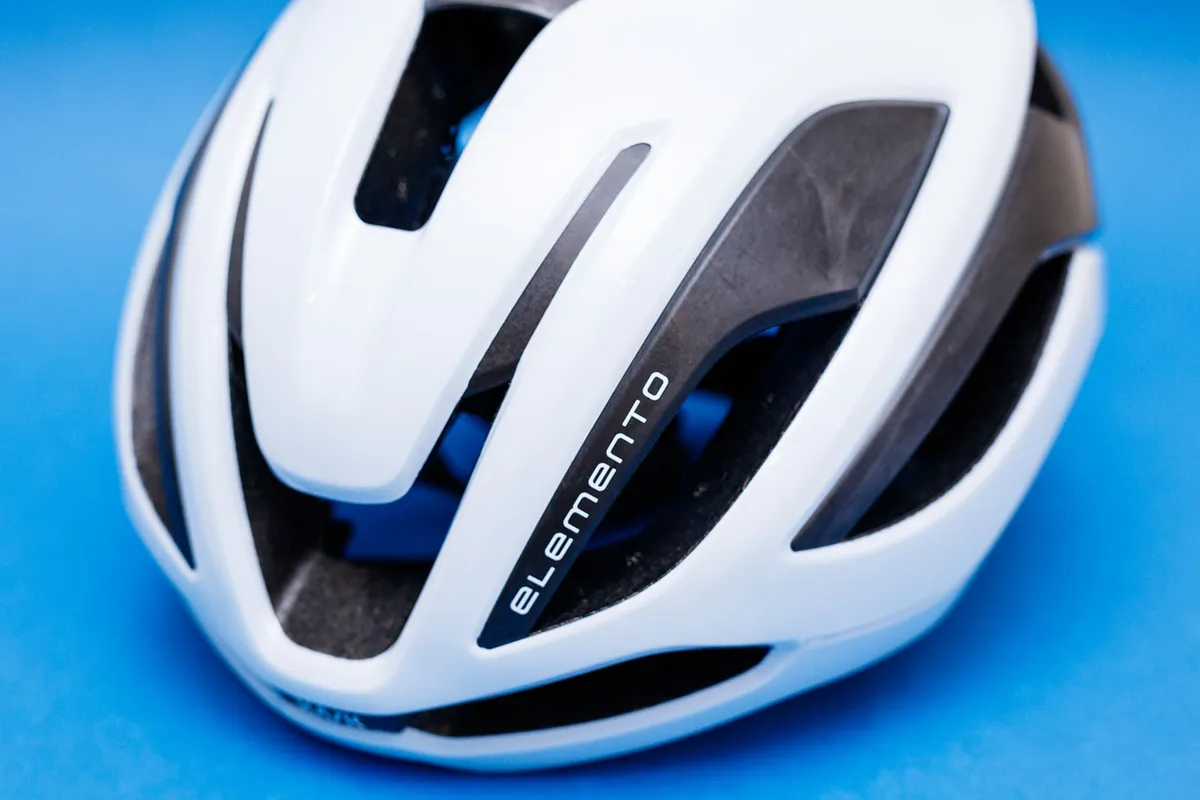
I also found it frustrating that there isn’t a dedicated sunglasses port on the front of the helmet.
This might not be a deal breaker for everyone, but as someone who likes to remove my sunglasses to allow more airflow across my face on long, hot climbs, I did find it an annoyance.
It was possible to store sunglasses securely at the back of the Elemento (on top of the retention system), but this is a trickier location to reach while riding.
Kask Elemento bottom line
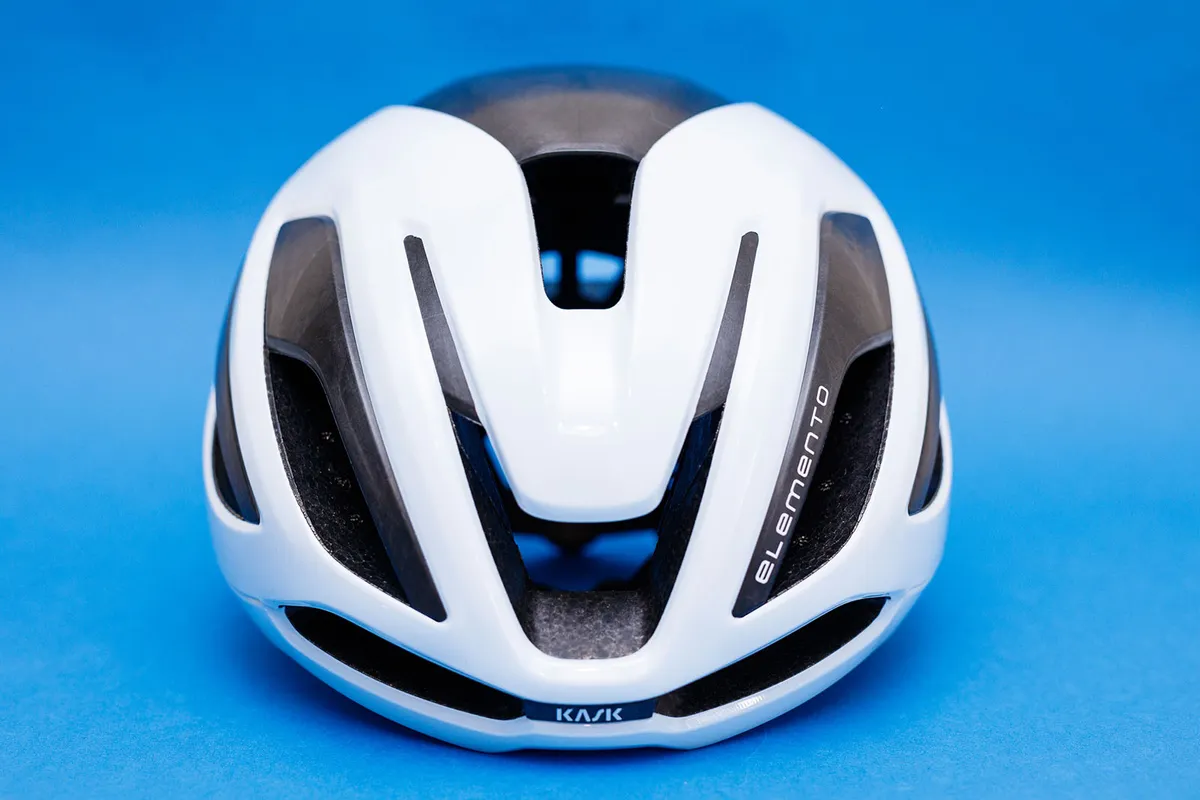
At first glance, there’s a lot to like about the Kask Elemento.
It makes use of some interesting new technology and the core of the helmet (the EPS foam body and the shell) is undoubtedly well constructed, with an impressively polished finish.
It’s also good looking and offers a comfortable, well-ventilated fit, rivalling the best aero road helmets currently available.
Unfortunately, though, the devil is in the details and there are a few too many niggles that are difficult to overlook at this price.
Product
| Brand | Kask |
| Price | A$570.00, €375.00, £335.00, $400.00 |
| Weight | 271g |
Features
| Helmet type | road |
| Features | Available sizes: S, M, L Colours: Black; Silver; White; Beetle Green; Red; Oxford Blue |

